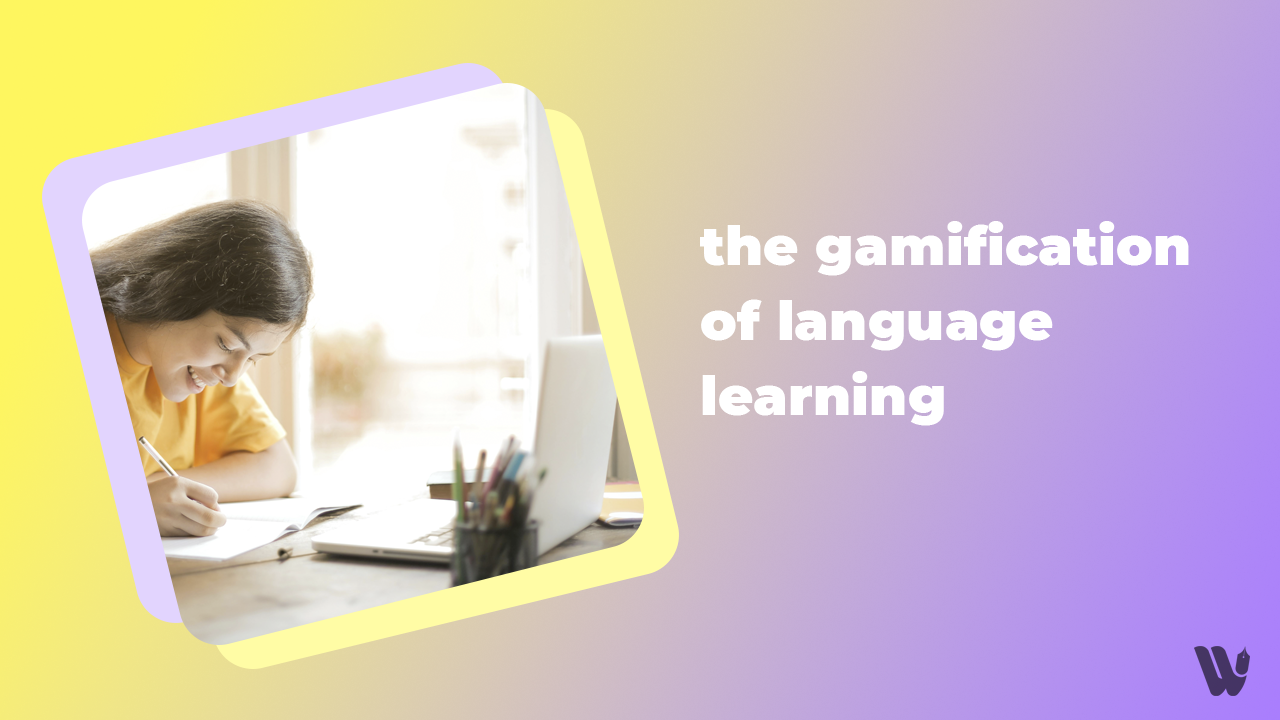This website uses cookies so that we can provide you with the best user experience possible. Cookie information is stored in your browser and performs functions such as recognising you when you return to our website and helping our team to understand which sections of the website you find most interesting and useful.
Have you ever imagined yourself on an epic quest, where every challenge you conquer brings you closer to speaking a new language? That’s the power of gamification! This exciting approach turns language learning from a chore into an immersive adventure. In this article, we’ll explore the magic of gamification and how it’s transforming language learning apps. We’ll uncover the secrets behind its success and show you real-world examples of how it’s making language learning fun and effective.
Define gamification and its relevance in education.
Gamification is more than just a buzzword; it’s a revolutionary concept that infuses elements of gameplay into educational activities, making learning interactive, enjoyable, and rewarding. By leveraging the principles of game design, gamification captivates learners’ attention, motivating them to actively participate in their learning journey.
Briefly overview the impact of gamification on language learning.
In the realm of language learning, gamification serves as a catalyst for engagement, motivation, and interactivity. By integrating gamified elements such as quizzes, challenges, and rewards, language e-learning platforms empower learners to immerse themselves in the language, enhancing retention and fostering a deeper understanding of linguistic concepts.
The Psychology Behind Gamification
Discuss the psychological principles that make gamification effective.
At the heart of gamification lies a deep understanding of human psychology. By tapping into intrinsic motivators such as curiosity, autonomy, and mastery, gamified language learning experiences ignite learners’ passion for exploration and discovery. Additionally, extrinsic motivators like points, badges, and rewards provide tangible incentives for continued effort and progress.
Explore how gamification can tap into intrinsic and extrinsic motivation.
Gamification creates a dynamic learning environment where learners feel a sense of autonomy and control over their progress. Through interactive challenges and personalized feedback, learners are motivated to overcome obstacles and achieve their language learning goals. Furthermore, the thrill of earning rewards and climbing leaderboards fuels a spirit of competition, driving learners to excel and surpass their own expectations.
Gamified Elements in Language E-Learning
Quizzes: Assessing progress and reinforcing knowledge.
Quizzes serve as checkpoints along the language learning journey, allowing learners to gauge their understanding of key concepts and identify areas for improvement. By providing immediate feedback and opportunities for reflection, quizzes reinforce learning outcomes and promote active engagement with the material.
Challenges: Encouraging competition and goal-setting.
Challenges inject an element of excitement into language learning, transforming mundane tasks into exhilarating adventures. Whether it’s completing vocabulary quests or conquering grammar hurdles, challenges inspire learners to set ambitious goals and strive for excellence. Moreover, the spirit of friendly competition fosters a sense of camaraderie among learners, fueling collaborative learning efforts.
Rewards: Providing incentives for continued learning.
Rewards serve as the ultimate motivator in gamified language learning, offering tangible recognition for achievements and milestones. From virtual badges and certificates to unlockable content and exclusive privileges, rewards incentivize learners to persist in their language learning journey and celebrate their progress along the way.
Case Studies
Present real-world examples where gamification has been successfully implemented in language e-learning platforms.
In the realm of language e-learning, platforms like Duolingo and Memrise have revolutionized the way people learn languages through gamification. By incorporating interactive challenges, progress tracking, and rewards systems, these platforms create immersive and enjoyable language learning experiences that captivate learners of all ages and proficiency levels.
Analyze the outcomes and feedback from learners.
Feedback from learners consistently highlights the transformative impact of gamification on their language learning journey. From increased engagement and motivation to improved retention and fluency, gamified language learning experiences empower learners to achieve their language learning goals with confidence and enthusiasm.
Designing Gamified Language Learning Experiences
Offer guidelines on how to integrate gamified elements into language courses.
When designing gamified language learning experiences, it’s essential to strike a balance between challenge and accessibility. Incorporate a variety of gamified elements, such as quizzes, challenges, and rewards, to cater to different learning styles and preferences. Furthermore, leverage storytelling and narratives to provide context and relevance to language learning activities, fostering deeper engagement and immersion.
Discuss the importance of balance to avoid overwhelming learners.
While gamification enhances engagement and motivation, it’s crucial to avoid overwhelming learners with excessive gamified elements. Maintain a delicate balance between challenge and support, ensuring that learners feel empowered to navigate their language learning journey at their own pace. Additionally, provide opportunities for reflection and self-assessment to promote metacognitive skills and foster a growth mindset.
Potential Pitfalls and How to Avoid Them
Gamifying language learning can be a game-changer, but even the most exciting games can have bugs. Here’s how to fix the common issues and create an experience that truly boosts your learning.
Mistake #1: Focusing on Points Over Progress
We all love winning badges, but getting caught up in extrinsic rewards (points, leaderboards) can backfire. The real goal is to spark intrinsic motivation, the inner satisfaction that comes from learning the language itself.
The Fix: Balance rewards with activities that are naturally fun and engaging. Imagine solving puzzles that teach you new vocabulary or having conversations about your favorite topics.
Mistake #2: Gamification Gone Off-Track
Sometimes, fancy features can distract from the actual lesson. Gamification should support your learning goals, not overshadow them.
The Fix: Ensure the core mechanics (grammar practice, vocabulary building) are still the main focus. Think of gamification as a booster for learning, not a replacement for the core curriculum.
Gamification has transformed language learning, inspiring and motivating learners of all backgrounds. From interactive challenges to virtual adventures, it sparks our imagination and ignites a passion for languages. Let’s embrace this magic and unlock the boundless potential of learning through gamification.
The future of gamification in language learning is brimming with possibilities. As technology advances, expect even more immersive, interactive, and personalized experiences. Gamification will cater to individual needs, creating unique pathways to fluency. Ultimately, it will help us break down language barriers and foster a world of effortless communication.









